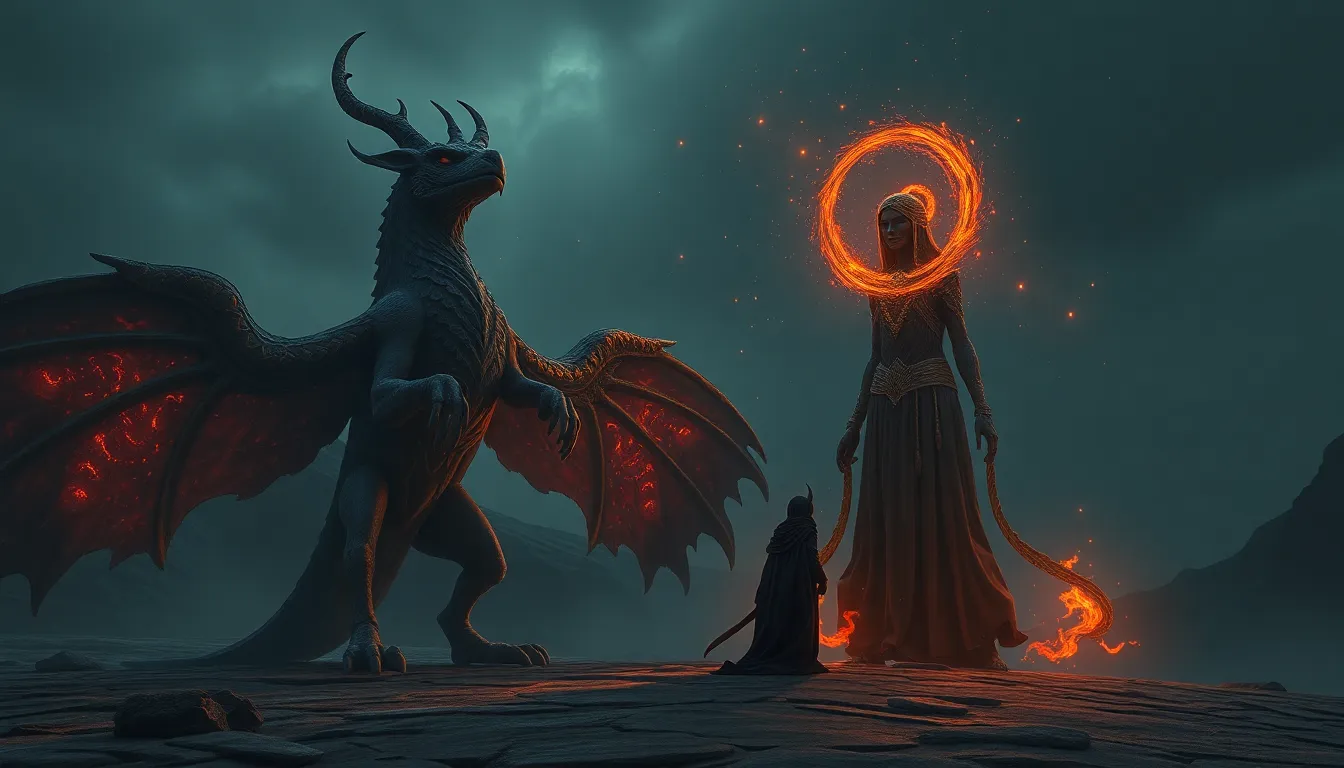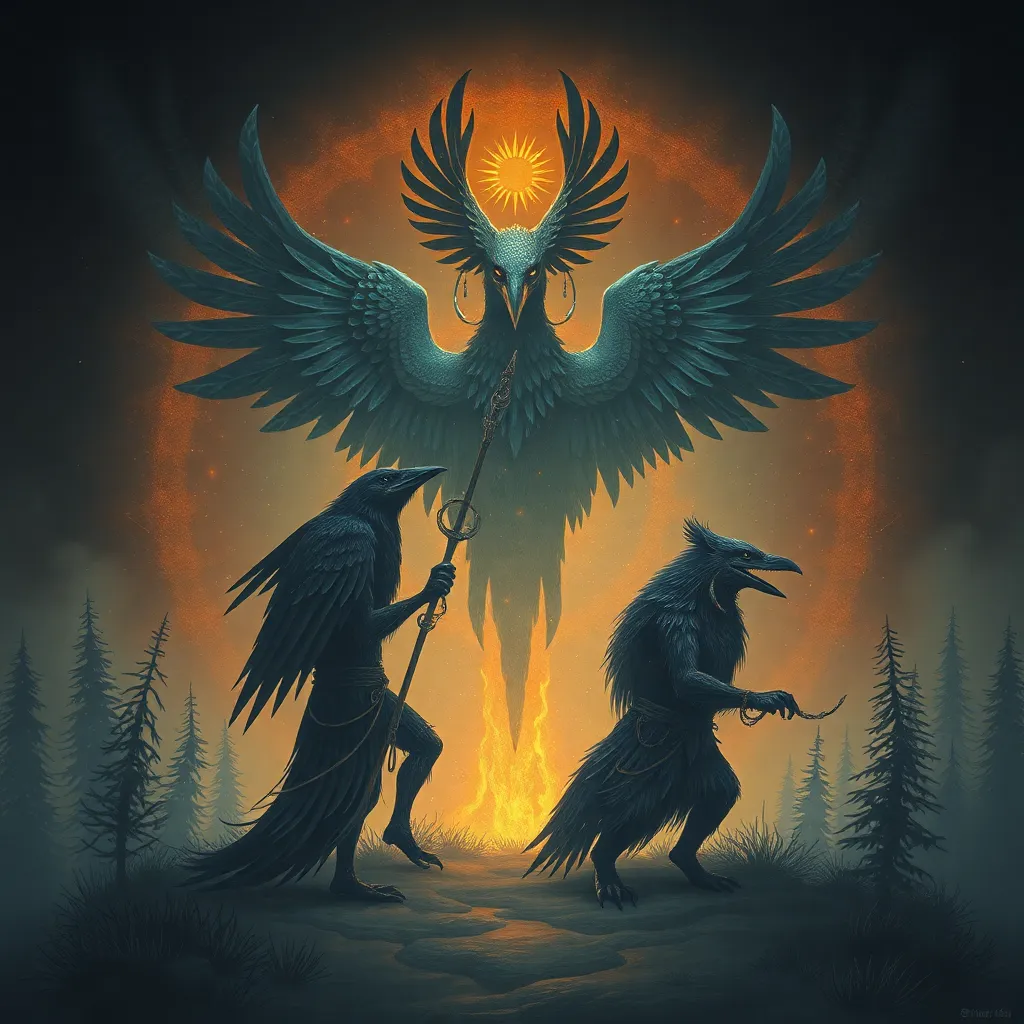The Roc and the King of the Jinn: A Tale of Conflict and Transformation
I. Introduction
The Roc and the King of the Jinn are two legendary figures steeped in rich mythology, each embodying unique traits and narratives that resonate across cultures. The Roc, a colossal bird of prey, and the King of the Jinn, a powerful supernatural being, serve as fascinating symbols in their respective mythologies. Their stories not only entertain but also impart valuable lessons and reflect the values of the societies that created them.
This article aims to explore the themes of conflict and transformation found within the tales of the Roc and the King of the Jinn, delving into their origins, characteristics, and the significant clash between them that serves as a pivotal moment in their narratives.
II. The Roc: A Legendary Creature
The Roc has its origins in ancient texts, most notably in Arabian Nights, where it is described as a gigantic bird capable of carrying off elephants. Its size and power have made it a subject of awe and fear in various cultures.
Symbolically, the Roc represents the untamed forces of nature and the sublime quality of the unknown. It is often seen as a guardian of the skies, showcasing both beauty and terror. In different cultures, the Roc embodies themes of strength, freedom, and the majesty of the natural world.
The Roc’s role in mythological stories often revolves around its immense power and the adventures it inspires. From tales of sailors encountering the bird to those of heroes who must outwit it, the Roc has left an indelible mark on folklore, illustrating the interplay between humanity and the formidable forces of nature.
III. The King of the Jinn: An Enigmatic Figure
In Arabian mythology, Jinn are supernatural beings created from smokeless fire, possessing free will and the ability to shape-shift. The King of the Jinn holds a significant place within this lore, often characterized by his immense power and complexity.
The King of the Jinn is depicted as a ruler with the ability to control and command other Jinn. His characteristics include wisdom, cunning, and a deep connection to both the earthly and supernatural realms. The King’s significance extends beyond mere myth; he symbolizes the duality of creation, embodying both benevolence and malevolence.
In cultural and religious contexts, the King of the Jinn represents the unseen forces that influence human lives, embodying the struggle between good and evil. His narratives often serve as cautionary tales about the consequences of one’s actions and the nature of power.
IV. The Conflict: Roc vs. King of the Jinn
The confrontation between the Roc and the King of the Jinn is set against a backdrop of mystical landscapes, where the skies meet the earth. This epic clash is driven by motivations that reflect their inherent natures: the Roc, a creature of the skies, is driven by instinct and the need to protect its territory, while the King of the Jinn is motivated by pride and the desire to assert his dominion over nature.
Key events leading to their clash include:
- The Roc’s capture of a sacred object that the King wishes to reclaim.
- The King of the Jinn’s attempts to manipulate the elements to challenge the Roc’s supremacy.
- The gathering of other Jinn and creatures to witness the showdown, highlighting the stakes of their conflict.
V. Themes of Transformation in the Tale
The tale of the Roc and the King of the Jinn is rich in themes of transformation, reflecting the personal growth of both characters. The Roc, initially a solitary creature, learns to navigate its world with greater wisdom, while the King of the Jinn confronts his hubris and the repercussions of his actions.
Symbolically, transformation in myths often signifies:
- Growth through adversity.
- The evolution of identity through conflict.
- The realization of one’s place within the cosmos.
Conflict serves as a catalyst for change, pushing both the Roc and the King of the Jinn to reassess their motivations and ultimately leading to personal revelations.
VI. Cultural Interpretations and Adaptations
The tales of the Roc and the Jinn have been adapted and interpreted in various cultures, each adding its unique flavor to the narrative. From ancient texts to contemporary literature, the essence of these mythological figures continues to captivate audiences.
Modern adaptations can be found in:
- Fantasy novels that draw on the strengths of mythical creatures.
- Films that depict epic battles between supernatural beings.
- Graphic novels that reimagine the Roc and the Jinn in contemporary settings.
As cultural narratives evolve, the Roc and the King of the Jinn remain relevant, illustrating the timeless nature of myth in exploring human experiences and challenges.
VII. Lessons from the Tale: Conflict and Resolution
The tale of the Roc and the King of the Jinn offers profound insights on conflict resolution. It highlights the importance of understanding differing perspectives and the potential for transformation through adversity.
Key lessons include:
- The significance of humility in the face of power.
- The necessity of dialogue and understanding in resolving conflicts.
- The idea that personal growth often emerges from struggle.
These moral and ethical implications provide a framework for navigating conflicts in real-life situations, reminding us of the lessons embedded within mythological narratives.
VIII. Conclusion
In summary, the Roc and the King of the Jinn represent enduring symbols of conflict and transformation within mythology. Their stories, rich with meaning and cultural significance, invite exploration into the complexities of human experience.
As we reflect on the lessons derived from their tale, we are reminded of the power of myth to illuminate our paths and guide us through the challenges we face. The ongoing relevance of the Roc and the King of the Jinn encourages us to delve deeper into similar tales across global mythologies, fostering a greater understanding of the human condition.



